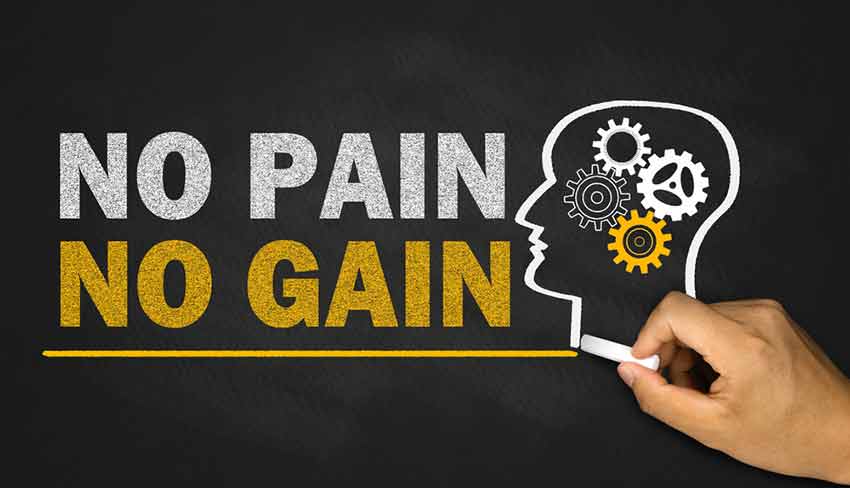No Pain No Gain!
NO PAIN NO GAIN?
Is the old saying ‘no pain no gain’ true? Is it OK to feel pain after exercise, and how much is too much?
DOMS, or Delayed Onset Muscle Soreness can be an uncomfortable reminder that we are not as strong as we thought we were. However, contrary to popular opinion, it can affect anyone regardless of fitness levels. From a couch potato running for the bus, to elite sportsman Andy Murray competing in the grueling heat of the Australian Open, there is no hiding from the beast that is DOMS.
DOMS is essentially muscle pain that appears a day or two after exercising. It occurs when we start exercising after a break or increase the frequency or intensity of the workout. Workouts with lots of eccentric muscle contractions (when the muscle lengthens under load such as the downward phase of a squat) are particular culprits. It is believed that microscopic damage occurs in the muscle fibers which causes pain and stiffness. People often blame lactic acid build up but instead it is caused by this microtrauma. Muscles go through an adaptation process during recovery and increase in bulk resulting in better stamina and power.
DOMS can be quite uncomfortable and many people reduce the intensity of their workout or sometimes stop all together in the belief they have injured themselves. Pain typically lasts for 3 to 5 days and can be mild to severe. It is important to differentiate this type of pain from acute injuries, which cause sudden sharp pain during exercise and requires medical or physiotherapy treatment.
You can relieve the symptoms of DOMS and speed recovery with ice packs, massage, trigger point therapy, stretching, sports taping, rest and non-steroidal anti-inflammatories such as ibuprofen. You can continue exercising with DOMS although it is recommended to go gently and refrain all together if the pain interferes with your technique too much. When the muscles warm up the symptoms can disappear but they return after cool down.
Prevent and minimize severe DOMS by starting a new program gently with a gradual build up of intensity and load. Although it won’t prevent DOMS, warming up and stretching reduces your chance of injury and improves your body’s performance.
So here is the good news… a bad episode of DOMS will actually prevent you from experiencing soreness in the same activity for a few weeks afterwards. So enjoy some pain free exercise while you can, you’ve earned it!!! Your muscles will be conditioned to do that activity so you will have less tissue damage, and recover faster. And remember – next time you feel yourself hobbling up the stairs after a tough workout – embrace the pain, and feel positive about how your body is responding and showing signs of improvement. It should evoke a sense of achievement as you climb the ladder to a healthier and happier you.

